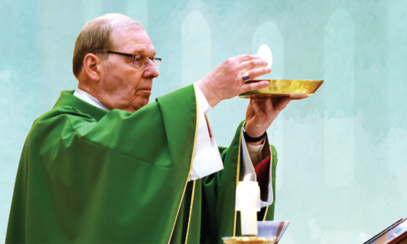
5 Tips for a Spanish Content Strategy When You Only Speak English
The growing Hispanic population within the Church is not a new reality, but too often it is an underserved one. I visit a lot of dioceses and talk to many leaders and communicators. For most of them, there is an acknowledgment that they need to do a better job of communicating in Spanish. Yet, most diocesan communicators do not know Spanish and have little exposure to the nuances of the Hispanic community. What can they do? Here are five tips for developing a Spanish content strategy for Catholic communicators who only speak English.
-
Get a Spanish-language communications advisor: If you don’t know Spanish, reach out and find a Spanish-speaking person in ministry. Find someone you can trust to ask basic questions, who can serve as your consultant. Define what that person’s role would be. The role could be as extensive as being the editor and content creator for Spanish content for the diocese, translating content from English to Spanish, or reading your translated content for clarity. Another way to view the role is one who advises on the needs of the Spanish-speaking community in your diocese. With that input, you can develop a Spanish content plan. The advisor might help you develop and vet the plan. This personHe or she might help you find relevant stories to cover and provide you with contacts. A Spanish-language advisor can help you find freelance writers and videographers who can produce content in Spanish under that plan and review the content before publication.
-
Develop a Spanish content plan: The needs of the Spanish-speaking Catholic community are diverse. Father Claudio Diaz, FAITH Catholic’s Spanish-language consultant, has advised me, a non-Spanish speaker. He has spoken at our client meeting about the needs of this diverse community. He says that an important factor is that the first generation of immigrants tend to know the least amount of English. Specific issues related to immigration and transition tend to be relevant to them . First-generation Hispanics tend to be more devotional and adherent. Those realities differ from second-and third-generation Hispanics. They don’t necessarily relate to immigrants. Second- and third-generation Hispanics are more likely to speak and read in both English and Spanish in their daily lives. They tend to be more influenced by and integrated into American secular society than first-generation Hispanics. Yet Spanish is still a vital part of their identity. Additionally, according to Father Claudio, Spanish is often the language where many Hispanics “learned to love God.” At the knees of their grandmothers they learned the Lord’s Prayer - in Spanish. Even though they prefer to speak and read English, many understand matters of faith better in Spanish. Knowing the unique nuances of Spanish-speaking generations helps the Catholic communicator develop a content plan that is authentic and relevant. In other words, if the only content produced in Spanish relates to immigration issues, that does the diversity of this community a disservice.
-
Understand what makes a good translation: Most Catholic communicators have had the experience of a translation gone bad. Apart from flat-out errors, the nuances of language usually are the biggest struggle with translations. “The Spanish is too formal.” Or, “This reads like Mexican Spanish and we have many other Spanish-speaking nationalities.” And, of course, you have to consider the nuances appropriate to Catholicism that a secular translator may not know. Finding a good translator, who understands Catholicism and the nuances of the language is a key asset for an English-speaking diocesan communicator.
-
Start bilingual publishing: If your diocese has a dedicated Spanish-language publication, that is great. Most dioceses cannot afford that. However, most dioceses can afford to have dedicated Spanish sections in their print publications and on their websites. Spanish sections in diocesan publications vary greatly. Some dioceses translate a few articles into Spanish within their diocesan publications. For example, many have the bishop’s column in English and Spanish side-by-side. Doing that sends a message to acknowledge this vital community. However, when no Spanish headlines appear on the cover and inside there are only a few pieces of Spanish content translated from English, it can be easily missed by Spanish readers. Worse, it can be viewed as tokenism. An increasing number of diocesan magazines that FAITH Catholic publishes have adopted a flip cover model, first developed for Bishop Burbidge when he was leading the Diocese of Raleigh. Like many dioceses, the Diocese of Raleigh has a growing and significant Spanish-speaking population. The idea of a single bilingual publication reinforces the idea that we are one Church versus two. Yet, side-by-side translations can be distracting to both English and Spanish readers. Dedicated Spanish sections get missed. The way the flip cover works is that one cover is in English. You flip the magazine over and instead of a back cover, you have a Spanish-language cover. The Spanish content flows from there for as many or as few pages as the diocese chooses. This model solves the English and Spanish tokenism problem because there is a dedicated cover that can be unique or a translation of the English. It also allows for editorial flexibility. For example, a 32-page magazine with a flip cover might have eight pages of Spanish content and 24 pages of English. Yet, it feels like the Spanish content is treated with authenticity and parity. Some dioceses do a flip cover every month. Others, like the Diocese of Grand Rapids, publish a bilingual flip magazine for four of their ten issues a year. Distribution of Spanish-language publications is another consideration. Many diocesan communicators understand that they may not have the mailing addresses for this population. To address that, they invest in drop shipments to local businesses, migrant farms and community centers in addition to a mailing list and parish bulk shipments.
-
Choose a partner: You do not need to tackle this challenge alone! And you don’t need to reinvent the wheel. There are partners that have the capabilities and experience to help your diocese reach your Hispanic community. For the dioceses FAITH Catholic serves, we have become a valued partner in bilingual publishing. All of our columns such as faith formation, advice for daily living and news content are available to our clients in Spanish for their publications, websites and social media. Our translators are very well respected. We have dedicated bilingual graphic designers. We publish more periodicals with Spanish content than any other publisher. We focus on helping diocesan communicators learn how to reach this vital audience. To learn more about how we do that, see this interview with Bishop James Tamayo, Father Claudio Diaz and others who have spoken at FAITH Catholic’s annual client conference and been featured in Content Evangelist. The conference is for FAITH Catholic clients and is free.


